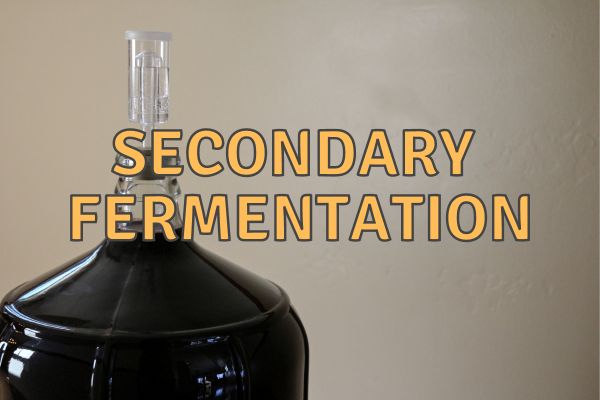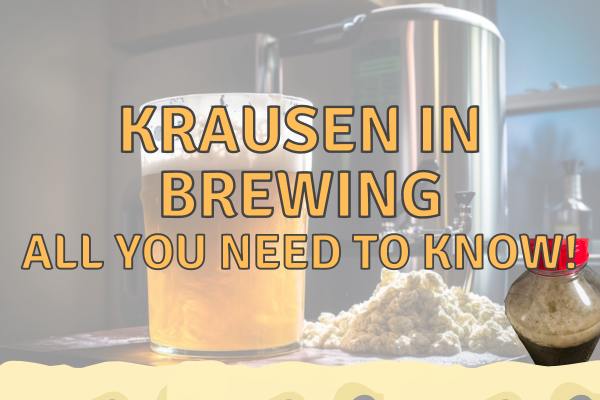Secondary fermentation in cider making serves as a critical phase for flavor development, refinement, and maturation of the cider. After the initial fermentation has consumed the majority of the sugars, leaving the cider dry, secondary fermentation allows the cider to clear and its flavors to mellow.
This step also provides the opportunity for any additional fermentation from residual sugars or added sweeteners to take place under controlled conditions without the intense activity of the primary fermentation.
The duration of secondary fermentation can significantly alter the final product’s taste, aroma, and clarity. It generally ranges from a few weeks to several months, depending on the cider maker’s preference, the initial sugar content, and the specific yeast used. Monitoring the cider during this time is crucial to determine when it has reached the desired level of carbonation, alcohol content, and flavor profile before bottling.
Key Takeaways
- Secondary fermentation is a critical phase for flavor development in cider.
- The duration of secondary fermentation varies based on several factors.
- Regular monitoring during secondary fermentation is essential for achieving desired cider qualities.
Understanding Secondary Fermentation
Secondary fermentation is a critical step for achieving desired clarity and complexity in cider flavors. It differs from primary fermentation and offers distinct benefits that are vital to the overall cider-making process.
The Role of Secondary Fermentation
Secondary fermentation occurs after the initial, or primary fermentation, process has completed. The cider is usually transferred to a new vessel to continue fermenting. This phase is crucial for the cider’s development as it allows for the maturation of flavor and clarity without the interference of sediments that are common in primary fermentation.
Secondary vs Primary Fermentation
While primary fermentation is characterized by vigorous activity where yeast converts most of the sugar to alcohol, secondary fermentation is a much slower and subtler process. It allows the cider to age, mellow, and develop a more refined taste. Primary fermentation typically takes anywhere from a week to two, depending on factors like temperature and yeast vigor, while secondary fermentation might extend several weeks to several months, which influences the final character of the cider.
Benefits of Secondary Fermentation
- Flavor Enhancement: Secondary fermentation provides the opportunity for complex flavor development beyond what primary fermentation can achieve.
- Improved Clarity: Without the excess yeast and sediment from the primary stage, the cider becomes clearer during secondary fermentation.
- Aging Potential: With the slower fermenting process, ciders are given the time they need to age and reach full maturity, often resulting in a superior end product.
Conducting secondary fermentation under the right conditions contributes significantly to the refinement of a cider, giving it the desired clarity and depth of flavor that is sought after in a high-quality beverage.
Preparing for Secondary Fermentation
Secondary fermentation is a crucial stage in cider making, where clarity improves and flavors mature. Proper preparation and attention to detail can significantly influence the quality of the final product.
Equipment Checklist
One must gather all necessary equipment before beginning secondary fermentation. The essentials include:
- A secondary fermentation vessel, typically a carboy or barrel
- Airlock and stopper to protect the cider from oxygen
- Racking cane or siphon to transfer cider without disturbing sediment
- Hydrometer to measure specific gravity
Cleaning and Sanitization
Ensuring all equipment is clean and sanitized cannot be overstated. Use a recommended sanitizer and follow these steps:
- Clean every piece of equipment to remove debris and residues.
- Sanitize all items according to the sanitizer’s instructions, paying close attention to contact times.
- Allow equipment to air dry completely to avoid diluting the cider with water.
Selecting the Right Yeast
The yeast strain greatly affects the cider’s flavor profile and fermentation activity. Considerations include:
- Desired flavor outcome: Some yeasts impart fruity esters, others offer a more neutral profile.
- Alcohol tolerance: Ensure selected yeast strain can withstand the alcohol levels you aim to reach.
- Attenuation level: High attenuation yeasts consume more sugars, potentially leading to a dryer cider.
Sugar and Specific Gravity
Adjusting sugar levels and measuring specific gravity are crucial for desired sweetness and alcohol content:
- Use a hydrometer to measure the cider’s specific gravity before secondary fermentation. This reading helps track fermentation progress and calculate potential alcohol.
- If needed, add sugar to the cider before transferring it to secondary fermentation to achieve the intended taste or to prime for carbonation. Sugar additions should be well-dissolved and evenly distributed.
The Secondary Fermentation Process
Secondary fermentation is critical in refining cider’s taste and clarity. It involves transferring the cider from the primary fermentation vessel to a secondary one, further stabilizing and maturing the product.
Racking from Primary to Secondary
The process begins with racking, a method of careful siphoning to leave behind the sediment accumulated during primary fermentation. This is typically done once the initial vigorous fermentation has subsided, and the gravity readings stabilize, indicating that sugar conversion is slowing down. It is crucial that this transfer minimizes exposure to oxygen to prevent oxidation, which can spoil the cider.
Controlling Fermentation Conditions
Maintaining an optimal ambient temperature is essential during secondary fermenting, as it affects both the speed and the quality of the fermentation. The ideal temperature range for most cider fermentation is between 12-18°C (54-64°F). The fermentation vessel should be sealed with an airlock to allow CO2 to escape while preventing unwanted contaminants from entering.
Monitoring Fermentation Activity
Regular monitoring during secondary fermentation is important. Gravity readings should continue to be taken to track the progress. When the gravity remains consistent over a few days, and no more CO2 appears to be escaping through the airlock, the fermentation activity can be considered complete. This stage can last from a few weeks to several months, depending on the cider’s desired dryness and clarity.
Determining Fermentation Duration
In secondary fermentation, precision is key. One must establish the correct duration to achieve desired taste and quality.
Typical Time Ranges
Secondary fermentation for cider varies from one to several months. Commonly, this process spans 1-3 months, but it can extend up to six months or longer for enhanced flavor profiles and clarity.
- 1 month: Minimum time for basic flavor maturation
- 2-3 months: Balanced for improved taste and clarity
- 4-6 months: For more complex, refined ciders
Factors Influencing Duration
Several factors determine the optimal amount of time cider should spend in secondary fermentation:
- Yeast strain: Different yeasts work at varying rates.
- Desired flavor: Aging can mellow harsh flavors.
- Type of apples used: Tannin levels affect maturation.
- Alcohol content: Higher alcohol may benefit from longer aging.
By monitoring gravity with a hydrometer, one can gauge the progress of the fermentation process. A stable gravity reading over a period indicates that fermentation has completed.
Testing for Completion
To determine if the cider has fully fermented and is ready for bottling:
- Measure specific gravity: A consistent reading across several days suggests the end of fermentation.
- Taste: A mature, stable flavor profile is a good indicator.
- Clarity: Cider clarity often improves with adequate aging.
Using a hydrometer to monitor the specific gravity throughout the secondary fermentation gives an objective measurement of the cider’s progress.
Post-Fermentation Handling
After the active fermentation of cider concludes, careful handling ensures the final product’s quality and stability. The post-fermentation stage refines the cider’s taste, clarity, and carbonation before it’s ready for enjoyment.
Clarification and Finishing
Clarification is crucial to remove unwanted yeast and particulates, resulting in a clearer beverage. Methods such as cold crashing, where the cider is chilled to encourage sediment to settle, and fining, where substances are added to bind to the solids, can be employed. The impact of juice clarification processes shows that these steps significantly affect the cider’s chemical composition and clarity.
Carbonation Options
Carbonation levels vary by cider style, from still (uncarbonated) to sparkling (heavily carbonated). Natural carbonation can be achieved through bottle conditioning, where a small amount of sugar is introduced at bottling to produce carbonation as it ages. Alternatively, forced carbonation involves injecting CO2 directly into the cider under pressure. The desired level of fizziness is controlled by adjusting the pressure and temperature during this phase.
Bottling and Storage
Cider is typically bottled using sanitized equipment to prevent any spoilage. Bottles must be pressure-rated if carbonation is intended, ensuring that they can withstand the force without bursting. Proper storage conditions—cool and out of direct sunlight—extend the cider’s shelf-life and help maintain its flavor profile. Cider’s longevity benefits from these carefully monitored conditions in storage.
Understanding Maturation
Maturation involves aging the cider to develop more complex flavors. This period allows the flavors to meld and evolve, often resulting in a smoother taste. The maturation process varies, from a few months to several years, depending on the desired outcome. It is not just the duration but also the fermentation’s biochemical factors that influence the maturation flavor of strong cider. Aging extends beyond bottling, as the cider can continue to condition and develop in the bottle.
Troubleshooting Common Issues
When crafting cider, brewers may encounter a few common problems during secondary fermentation which can affect the final product’s quality. These issues include stalled fermentation, the development of off-flavors and contamination, as well as effectively managing sediment accumulation. Addressing these problems swiftly and accurately ensures a successful cider fermentation process.
Stalled Fermentation
Stalled fermentation occurs when yeast becomes inactive before fully fermenting the sugars. This can lead to a sweeter, lower-alcohol cider than intended. Potential causes include:
- Temperature Fluctuations: Maintain a consistent temperature suited to the yeast strain.
- Nutrient Deficiencies: Ensure yeast has access to necessary nutrients for healthy fermentation.
If fermentation halts, assessing these factors and adjusting accordingly can help restart the process.
Off-Flavors and Contamination
Off-flavors may be introduced by wild yeast or bacteria, resulting in undesirable tastes. Contamination risk can be mitigated by:
- Sanitation: Properly clean and sanitize all equipment before use.
- Sourness or Medicinal Tastes: Often indicative of contamination, these flavors suggest a need for increased sterilization practices.
Consulting resources on expert techniques for fermenting can provide deeper insight into preventing these issues.
Managing Sediment
Sediment build-up is natural, but excessive amounts can impact flavor and clarity. To manage sediment:
- Racking: Carefully transfer cider off the sediment to a new container.
- Clarifying Agents: Use clarifying agents that can help precipitate out suspended particles.
While some sediment is expected, keeping it in check prevents overclouding and flavor problems. For more detailed information on managing fermentation by-products, cider makers can refer to in-depth guides, such as one on fermentation and its role in cider making.
Advanced Techniques and Considerations
Advanced cider-making involves a careful balance of flavors and stability, considering how additives and aging processes contribute to the final product’s quality. Secondary fermentation is a pivotal stage where one has significant control over the developing taste and preservation of the cider.
Experimenting with Flavors
Secondary fermentation is an opportune time for cider makers to infuse distinct characteristics into apple cider. By introducing flavors, such as cinnamon sticks or various spices, one can tailor the cider’s flavor profile to a specific palate. Careful measurement is essential as the potency of additives can vary. For instance, a single cinnamon stick can impart subtle warmth without overpowering the cider, especially if left to infuse over an extended period.
Aging in Barrels
Aging cider in barrels is a time-honored method that imparts depth and complexity. Different types of barrels can contribute varying flavor notes, such as vanilla from oak, or add tannins to the profile, enhancing the cider’s structure. It’s crucial to monitor the aging process, as the duration directly affects the intensity of the imparted flavors. Small barrels will infuse flavors more rapidly than larger ones due to a higher surface area to volume ratio.
Utilizing Additives for Stability
To ensure cider’s longevity, additives like acid, sulfites, and potassium sorbate are introduced to maintain stability and prevent spoilage. Acid can be used to adjust the cider’s pH, enhancing its sharpness and acting as a natural preservative. Sulfites, in proper quantities, serve as antioxidants and antimicrobial agents, while potassium sorbate is added to prevent yeast from fermenting any remaining sugars after bottling. It is critical these additives are measured precisely, as they must be effective without altering the intended taste significantly.





Leave a Reply
You must be logged in to post a comment.